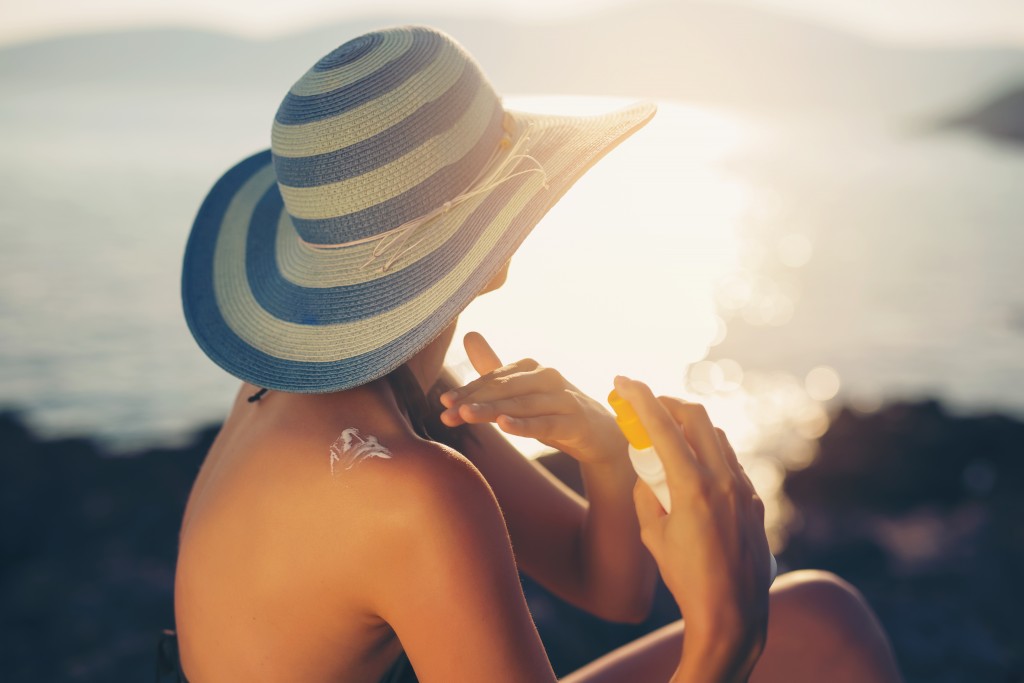If you frequent the great outdoors — you probably know that sun protection is essential. However, harmful ultraviolet (UV) rays from the sun can get to you almost anywhere — and some situations make them more dangerous.
In Your Travels
Using sunblock while hiking might be a given for most hikers, but there are a few ones out there that need to feel the burn before taking proper care. It’s even more important if you’re hiking or climbing at high altitudes. UV concentrations go up by up to 7% per 1,000 feet of elevation. Even altitudes considered moderate (5,000 to 8,000 feet) can expose you to 35-56 percent more UV. Sunblock is a must, but you better make sure you wear protective clothing — otherwise, you’ll be using a lot of sunblock. Opt for shirts with sleeves or get a pair of hiking sleeves to protect your arms. If you like wearing shorts while hiking or climbing, it can be problematic if the sun is out or there are particularly nasty insects on the trail. Stick to leggings or pants and avoid putting on sunblock constantly — as well as insect bites and minor scratches.
At Home
 You might believe your home is a safe place — but it isn’t from the sun. Homes with large glass windows and doors are specifically made to let the sunshine in — and with it, harmful UV rays. While heavy drapes and blinds can keep sunlight out, they also negate the point of having those wide glass windows and doors. If you want to keep the UV out but still let the sunshine in — you’ll need some UV film for your windows and doors. Window film installation doesn’t take much work, and it’s not at all expensive. UV film is applied to your windows and doors like a sticker, and the process should take less than a day. Don’t worry; your house won’t look dark and dreary as UV film can be as clear or as opaque as you want it to be.
You might believe your home is a safe place — but it isn’t from the sun. Homes with large glass windows and doors are specifically made to let the sunshine in — and with it, harmful UV rays. While heavy drapes and blinds can keep sunlight out, they also negate the point of having those wide glass windows and doors. If you want to keep the UV out but still let the sunshine in — you’ll need some UV film for your windows and doors. Window film installation doesn’t take much work, and it’s not at all expensive. UV film is applied to your windows and doors like a sticker, and the process should take less than a day. Don’t worry; your house won’t look dark and dreary as UV film can be as clear or as opaque as you want it to be.
On the Road
Thirty minutes of driving on the road might not seem much — however, your daily commutes exposes you to significant amounts of UV radiation. Studies in the US have linked driving to melanomas and skin cancer — particularly on the left side of the body. Studies in the UK have similar findings — however, their studies note that melanomas and skin cancer occur largely on the left side of the body (since they drive on the left side of the road). While you can certainly use sunscreen on your daily drives, a better alternative is to make your vehicle safe from UV. Your vehicle’s windshield should have enough UV shielding, but its other windows will require protective UV film. A quick drive to the shop should be enough to protect your car from UV and make your commutes a lot safer.
UV radiation can be serious and could cause cancer in certain people. Skin cancer is the most prevalent cancer in the US — but a little protection from the sun can keep it at bay.

